Siqi Sun
TimeSeriesScientist: A General-Purpose AI Agent for Time Series Analysis
Oct 02, 2025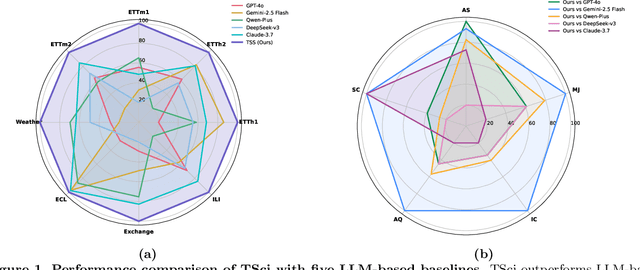

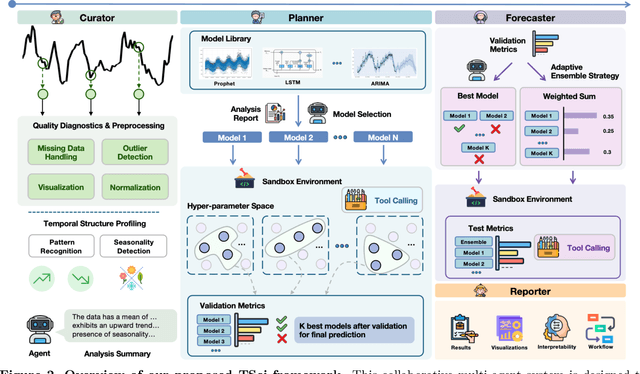

Abstract:Time series forecasting is central to decision-making in domains as diverse as energy, finance, climate, and public health. In practice, forecasters face thousands of short, noisy series that vary in frequency, quality, and horizon, where the dominant cost lies not in model fitting, but in the labor-intensive preprocessing, validation, and ensembling required to obtain reliable predictions. Prevailing statistical and deep learning models are tailored to specific datasets or domains and generalize poorly. A general, domain-agnostic framework that minimizes human intervention is urgently in demand. In this paper, we introduce TimeSeriesScientist (TSci), the first LLM-driven agentic framework for general time series forecasting. The framework comprises four specialized agents: Curator performs LLM-guided diagnostics augmented by external tools that reason over data statistics to choose targeted preprocessing; Planner narrows the hypothesis space of model choice by leveraging multi-modal diagnostics and self-planning over the input; Forecaster performs model fitting and validation and, based on the results, adaptively selects the best model configuration as well as ensemble strategy to make final predictions; and Reporter synthesizes the whole process into a comprehensive, transparent report. With transparent natural-language rationales and comprehensive reports, TSci transforms the forecasting workflow into a white-box system that is both interpretable and extensible across tasks. Empirical results on eight established benchmarks demonstrate that TSci consistently outperforms both statistical and LLM-based baselines, reducing forecast error by an average of 10.4% and 38.2%, respectively. Moreover, TSci produces a clear and rigorous report that makes the forecasting workflow more transparent and interpretable.
Curriculum Learning for Biological Sequence Prediction: The Case of De Novo Peptide Sequencing
Jun 16, 2025Abstract:Peptide sequencing-the process of identifying amino acid sequences from mass spectrometry data-is a fundamental task in proteomics. Non-Autoregressive Transformers (NATs) have proven highly effective for this task, outperforming traditional methods. Unlike autoregressive models, which generate tokens sequentially, NATs predict all positions simultaneously, leveraging bidirectional context through unmasked self-attention. However, existing NAT approaches often rely on Connectionist Temporal Classification (CTC) loss, which presents significant optimization challenges due to CTC's complexity and increases the risk of training failures. To address these issues, we propose an improved non-autoregressive peptide sequencing model that incorporates a structured protein sequence curriculum learning strategy. This approach adjusts protein's learning difficulty based on the model's estimated protein generational capabilities through a sampling process, progressively learning peptide generation from simple to complex sequences. Additionally, we introduce a self-refining inference-time module that iteratively enhances predictions using learned NAT token embeddings, improving sequence accuracy at a fine-grained level. Our curriculum learning strategy reduces NAT training failures frequency by more than 90% based on sampled training over various data distributions. Evaluations on nine benchmark species demonstrate that our approach outperforms all previous methods across multiple metrics and species.
Scientists' First Exam: Probing Cognitive Abilities of MLLM via Perception, Understanding, and Reasoning
Jun 12, 2025Abstract:Scientific discoveries increasingly rely on complex multimodal reasoning based on information-intensive scientific data and domain-specific expertise. Empowered by expert-level scientific benchmarks, scientific Multimodal Large Language Models (MLLMs) hold the potential to significantly enhance this discovery process in realistic workflows. However, current scientific benchmarks mostly focus on evaluating the knowledge understanding capabilities of MLLMs, leading to an inadequate assessment of their perception and reasoning abilities. To address this gap, we present the Scientists' First Exam (SFE) benchmark, designed to evaluate the scientific cognitive capacities of MLLMs through three interconnected levels: scientific signal perception, scientific attribute understanding, scientific comparative reasoning. Specifically, SFE comprises 830 expert-verified VQA pairs across three question types, spanning 66 multimodal tasks across five high-value disciplines. Extensive experiments reveal that current state-of-the-art GPT-o3 and InternVL-3 achieve only 34.08% and 26.52% on SFE, highlighting significant room for MLLMs to improve in scientific realms. We hope the insights obtained in SFE will facilitate further developments in AI-enhanced scientific discoveries.
Universal Biological Sequence Reranking for Improved De Novo Peptide Sequencing
May 23, 2025Abstract:De novo peptide sequencing is a critical task in proteomics. However, the performance of current deep learning-based methods is limited by the inherent complexity of mass spectrometry data and the heterogeneous distribution of noise signals, leading to data-specific biases. We present RankNovo, the first deep reranking framework that enhances de novo peptide sequencing by leveraging the complementary strengths of multiple sequencing models. RankNovo employs a list-wise reranking approach, modeling candidate peptides as multiple sequence alignments and utilizing axial attention to extract informative features across candidates. Additionally, we introduce two new metrics, PMD (Peptide Mass Deviation) and RMD (residual Mass Deviation), which offer delicate supervision by quantifying mass differences between peptides at both the sequence and residue levels. Extensive experiments demonstrate that RankNovo not only surpasses its base models used to generate training candidates for reranking pre-training, but also sets a new state-of-the-art benchmark. Moreover, RankNovo exhibits strong zero-shot generalization to unseen models whose generations were not exposed during training, highlighting its robustness and potential as a universal reranking framework for peptide sequencing. Our work presents a novel reranking strategy that fundamentally challenges existing single-model paradigms and advances the frontier of accurate de novo sequencing. Our source code is provided on GitHub.
AlignRAG: An Adaptable Framework for Resolving Misalignments in Retrieval-Aware Reasoning of RAG
Apr 21, 2025Abstract:Retrieval-augmented generation (RAG) has emerged as a foundational paradigm for knowledge-grounded text generation. However, existing RAG pipelines often fail to ensure that the reasoning trajectories align with the evidential constraints imposed by retrieved content. In this paper, we reframe RAG as a problem of retrieval-aware reasoning and identify a core challenge: reasoning misalignment-the mismatch between a model's reasoning trajectory and the retrieved evidence. To address this challenge, we propose AlignRAG, a novel test-time framework that mitigates reasoning misalignment through iterative Critique-Driven Alignment (CDA) steps. In contrast to prior approaches that rely on static training or post-hoc selection, AlignRAG actively refines reasoning trajectories during inference by enforcing fine-grained alignment with evidence. Our framework introduces a new paradigm for retrieval-aware reasoning by: (1) constructing context-rich training corpora; (2) generating contrastive critiques from preference-aware reasoning trajectories; (3) training a dedicated \textit{Critic Language Model (CLM)} to identify reasoning misalignments; and (4) applying CDA steps to optimize reasoning trajectories iteratively. Empirical results demonstrate that AlignRAG consistently outperforms all baselines and could integrate as a plug-and-play module into existing RAG pipelines without further changes. By reconceptualizing RAG as a structured reasoning trajectory and establishing the test-time framework for correcting reasoning misalignments in RAG, AlignRAG provides practical advancements for retrieval-aware generation.
Strategic priorities for transformative progress in advancing biology with proteomics and artificial intelligence
Feb 21, 2025

Abstract:Artificial intelligence (AI) is transforming scientific research, including proteomics. Advances in mass spectrometry (MS)-based proteomics data quality, diversity, and scale, combined with groundbreaking AI techniques, are unlocking new challenges and opportunities in biological discovery. Here, we highlight key areas where AI is driving innovation, from data analysis to new biological insights. These include developing an AI-friendly ecosystem for proteomics data generation, sharing, and analysis; improving peptide and protein identification and quantification; characterizing protein-protein interactions and protein complexes; advancing spatial and perturbation proteomics; integrating multi-omics data; and ultimately enabling AI-empowered virtual cells.
COMET: Benchmark for Comprehensive Biological Multi-omics Evaluation Tasks and Language Models
Dec 13, 2024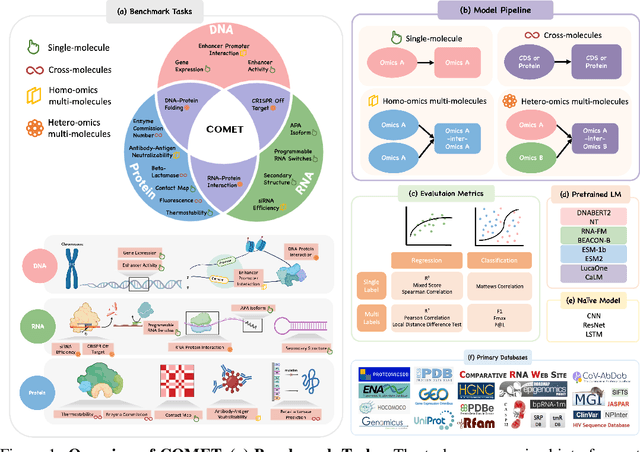
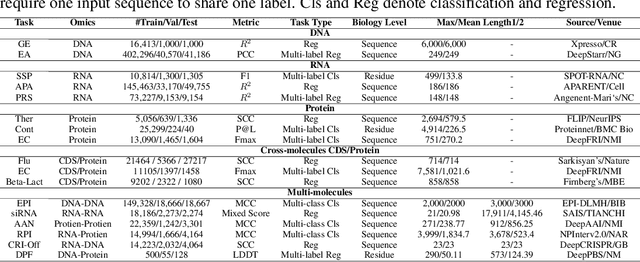

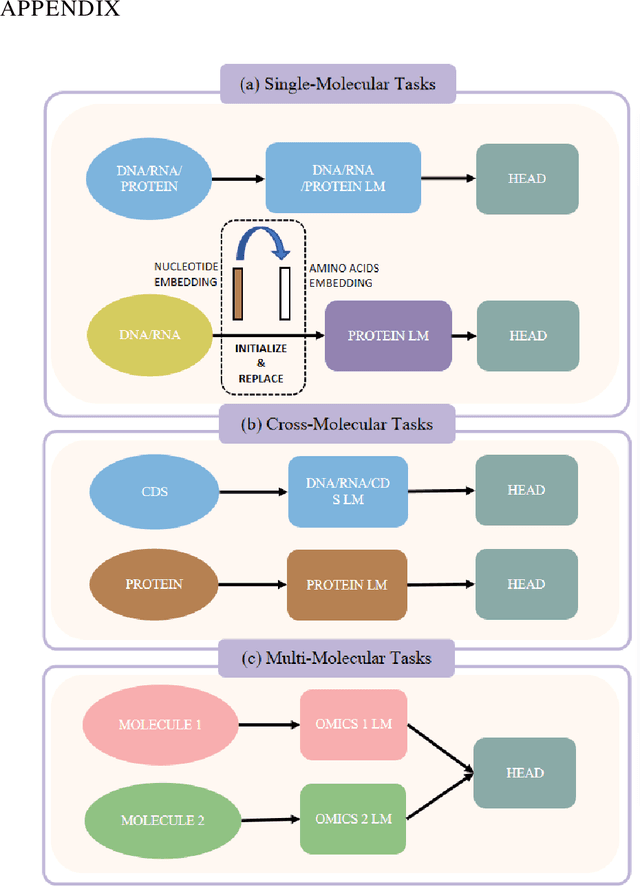
Abstract:As key elements within the central dogma, DNA, RNA, and proteins play crucial roles in maintaining life by guaranteeing accurate genetic expression and implementation. Although research on these molecules has profoundly impacted fields like medicine, agriculture, and industry, the diversity of machine learning approaches-from traditional statistical methods to deep learning models and large language models-poses challenges for researchers in choosing the most suitable models for specific tasks, especially for cross-omics and multi-omics tasks due to the lack of comprehensive benchmarks. To address this, we introduce the first comprehensive multi-omics benchmark COMET (Benchmark for Biological COmprehensive Multi-omics Evaluation Tasks and Language Models), designed to evaluate models across single-omics, cross-omics, and multi-omics tasks. First, we curate and develop a diverse collection of downstream tasks and datasets covering key structural and functional aspects in DNA, RNA, and proteins, including tasks that span multiple omics levels. Then, we evaluate existing foundational language models for DNA, RNA, and proteins, as well as the newly proposed multi-omics method, offering valuable insights into their performance in integrating and analyzing data from different biological modalities. This benchmark aims to define critical issues in multi-omics research and guide future directions, ultimately promoting advancements in understanding biological processes through integrated and different omics data analysis.
Acquiring Pronunciation Knowledge from Transcribed Speech Audio via Multi-task Learning
Sep 15, 2024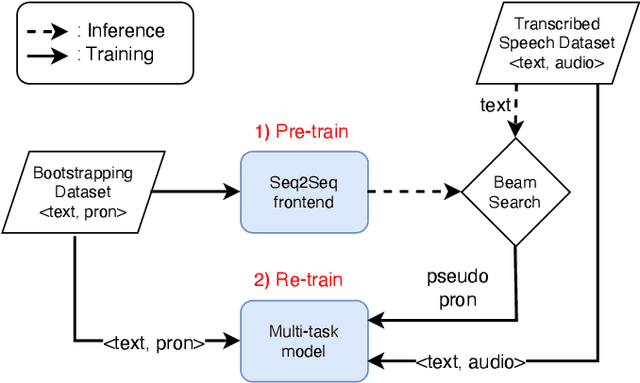
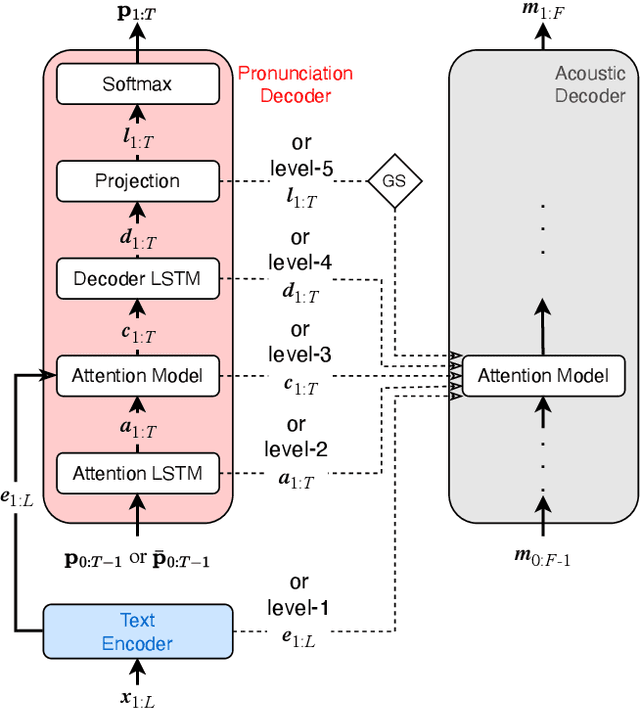
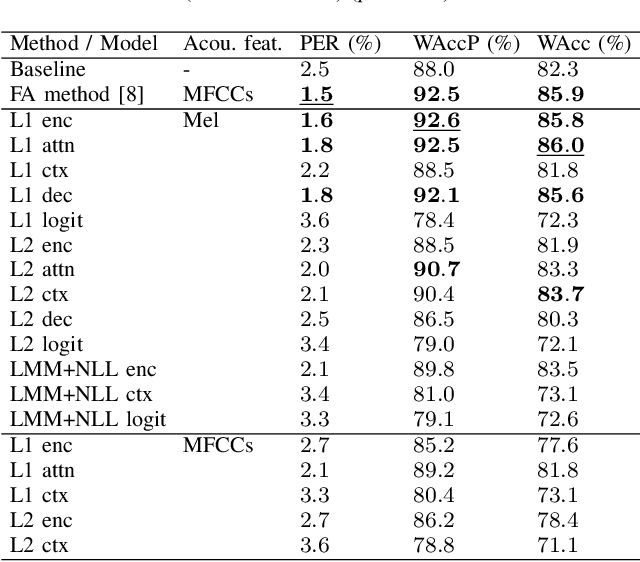

Abstract:Recent work has shown the feasibility and benefit of bootstrapping an integrated sequence-to-sequence (Seq2Seq) linguistic frontend from a traditional pipeline-based frontend for text-to-speech (TTS). To overcome the fixed lexical coverage of bootstrapping training data, previous work has proposed to leverage easily accessible transcribed speech audio as an additional training source for acquiring novel pronunciation knowledge for uncovered words, which relies on an auxiliary ASR model as part of a cumbersome implementation flow. In this work, we propose an alternative method to leverage transcribed speech audio as an additional training source, based on multi-task learning (MTL). Experiments show that, compared to a baseline Seq2Seq frontend, the proposed MTL-based method reduces PER from 2.5% to 1.6% for those word types covered exclusively in transcribed speech audio, achieving a similar performance to the previous method but with a much simpler implementation flow.
AccentBox: Towards High-Fidelity Zero-Shot Accent Generation
Sep 13, 2024

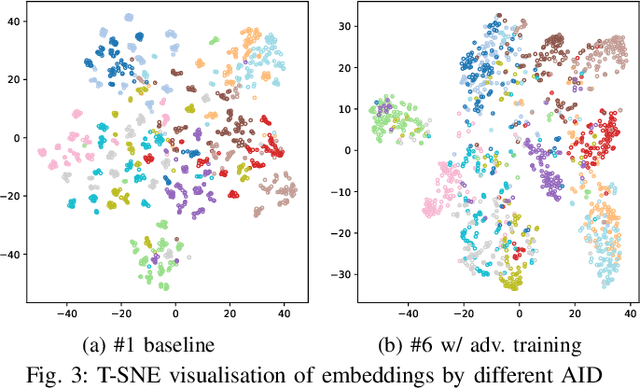

Abstract:While recent Zero-Shot Text-to-Speech (ZS-TTS) models have achieved high naturalness and speaker similarity, they fall short in accent fidelity and control. To address this issue, we propose zero-shot accent generation that unifies Foreign Accent Conversion (FAC), accented TTS, and ZS-TTS, with a novel two-stage pipeline. In the first stage, we achieve state-of-the-art (SOTA) on Accent Identification (AID) with 0.56 f1 score on unseen speakers. In the second stage, we condition ZS-TTS system on the pretrained speaker-agnostic accent embeddings extracted by the AID model. The proposed system achieves higher accent fidelity on inherent/cross accent generation, and enables unseen accent generation.
BEACON: Benchmark for Comprehensive RNA Tasks and Language Models
Jun 14, 2024Abstract:RNA plays a pivotal role in translating genetic instructions into functional outcomes, underscoring its importance in biological processes and disease mechanisms. Despite the emergence of numerous deep learning approaches for RNA, particularly universal RNA language models, there remains a significant lack of standardized benchmarks to assess the effectiveness of these methods. In this study, we introduce the first comprehensive RNA benchmark BEACON (\textbf{BE}nchm\textbf{A}rk for \textbf{CO}mprehensive R\textbf{N}A Task and Language Models). First, BEACON comprises 13 distinct tasks derived from extensive previous work covering structural analysis, functional studies, and engineering applications, enabling a comprehensive assessment of the performance of methods on various RNA understanding tasks. Second, we examine a range of models, including traditional approaches like CNNs, as well as advanced RNA foundation models based on language models, offering valuable insights into the task-specific performances of these models. Third, we investigate the vital RNA language model components from the tokenizer and positional encoding aspects. Notably, our findings emphasize the superiority of single nucleotide tokenization and the effectiveness of Attention with Linear Biases (ALiBi) over traditional positional encoding methods. Based on these insights, a simple yet strong baseline called BEACON-B is proposed, which can achieve outstanding performance with limited data and computational resources. The datasets and source code of our benchmark are available at https://github.com/terry-r123/RNABenchmark.
 Add to Chrome
Add to Chrome Add to Firefox
Add to Firefox Add to Edge
Add to Edge